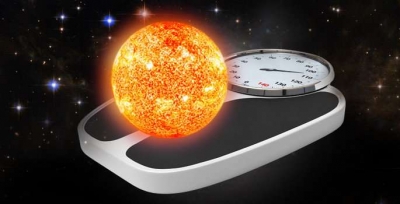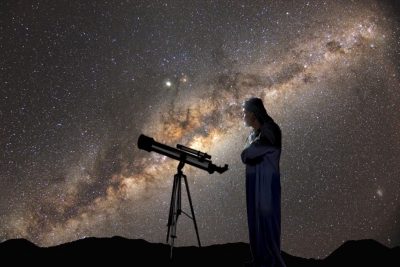
The stars in any double-star system, such as Cygnus X-1 and HDE 226868, swing around their common centre of gravity. If the stars are equally massive, their centre of gravity lies halfway between them. If not, it lies closer to the heavier star. So a double-star system forms a natural balance which allows astronomers to ‘weigh’ stars. By studying the motion of the star HDE 226868, astronomers found that the centre of gravity lay so close to the star that it suggested its companion must be half the weight, or mass, of the star itself.
HDE 226868 is a type of the star called a blue super giant. It is 20 million miles (32 million km) across and shines 50,000 times more brilliantly than the Sun. A blue super giant is about 20 times heavier than the Sun. That is, it has 20 times the mass of the Sun. So if its invisible companion, the black hole Cygnus X-1, is half this weight, it must weigh as much as ten Suns.
The Sun itself weighs as much as 300,000 Earths or 1989 million million million million tons. Astronomers calculate this figure by using the theory of gravity. Careful experiments in the laboratory have revealed the gravitational pull between two large lead spheres of known masses. This force depends partly on the distance between them. This experiment can be ‘scaled up’ so that the distance between the spheres becomes the distance of the Earth from the Sun. It can then be deduced how massive the Sun must be in order to exert the gravitational pull needed to keep the Earth and the other planets in orbit around it.
Picture Credit : Google

